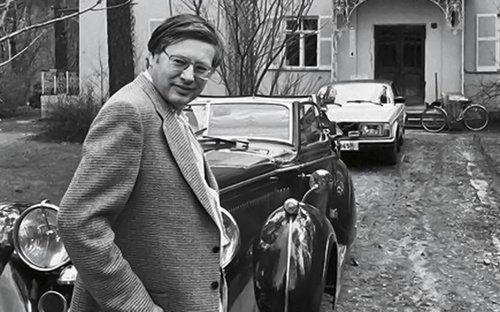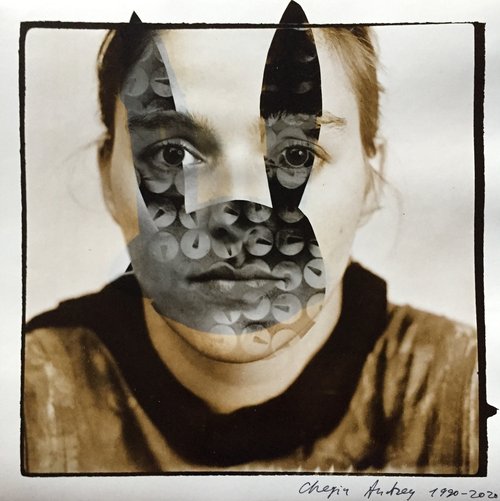Fabled St Petersburg squat hands over its art collection

Pushkinskaya-10. The 21st Century Ark. Montage. St Petersburg, 2024. The Manege Central Exhibition Hall. Image from The Manege Central Exhibition Hall social media page
Pushkinskaya 10, a legendary artist squat in St Petersburg has swapped its underground hive for the institutional trappings of museum respectability. Its expansive collection has been handed to a municipal-run art centre in the city, and an exhibition to mark the occasion has just opened.
The exhibition ‘Pushkinskaya-10. The 21st Century Ark’, recently opened at St Petersburg’s Manege Central Exhibition Hall, is a notable step in the museification of Russia’s so-called ‘unofficial’ art. On display are works collected over the last quarter of a century by the ‘Museum of Nonconformist Art’, established in 1999 by the ‘Free Culture’ Art Centre at Pushkinskaya 10. Every year artists who had a studio at the squat had to donate one work to a museum foundation, which has since gained more than mere cultural significance. Its artistic quality may be uneven, but the resultant collection is of considerable material value. Recently, it has passed into the keeping of St. Petersburg’s Manege Central Exhibition Hall. Currently, only one fifth of the 4,500 works are on display, but they plan to update it regularly.
Since the mid-1970s, a movement of ‘unofficial’ artists emerged in Leningrad who defied the authorities in defending their right to show their works to the public. The social and artistic meanings behind their struggle are intertwined. The current exhibition, which consists of works of very different artistic levels and qualities, attests to the heroic and romantic modus of how the artists perceived their work, and how it was shaped and represented the ideology of the art centre at Pushkinskaya 10. For over half a century now, art persecuted by the authorities has travelled from attics and basements to state collections and world-class museums. In many ways, an exhibition about a heroic struggle that came good in the end is an inspirational example of historical justice.
Unfortunately, the structure of the exhibition at the Manege lacks clarity. The average viewer who wants to understand what Leningrad unofficial art was and how it evolved and existed in the final decades of the last century will not get any clear answers. The exhibition is a rough mix of works by artists of different fates and creative orientations. While some are represented by numerous works, others may not be shown at all. Dmitry Shagin (b. 1957), a founder of the ‘Mitki’ group, known for his antipathy towards state institutions, last year publicised a scandal around the work ‘Mitki don't want to defeat anyone’ which was removed from an exhibition at the Moscow Museum of Decorative and Applied Arts.
Long before the Pushkinskaya 10 Art Centre was established, Yuri Zharkikh (b. 1938), Alek Rappoport (1933-1997), and Mikhail Shemyakin (b. 1943) had emigrated from the USSR, while Yevgeny Rukhin (1943-1976) and Alexander Arefiev (1931-1978) had passed away. As members of the official Union of Artists, Vyacheslav Mikhailov (b. 1945), Nikolai Sazhin (1948-2019) and Alexander Petrov (1951-2009) still had professional rights, if only formally. The group of young people who gathered around Timur Novikov (1958-2002) chose to live and work in other city squats or self-occupied spaces adjacent to Pushkinskaya 10.
The design of the current exhibition is down to Sergei Padalko (b. 1969), who heads the progressive architectural bureau Vitruvius & Sons. The layout suppresses the works on display, as though it seeks to hide the poverty of curatorial thought by artificially reducing the space for hanging the paintings. It is reminiscent of the style that emerged following the exhibitions ‘Time of Changes’ at the Russian Museum (2006), ‘Pyramid of Nonconformism’ at PERMM (2010), and ‘Not Forever’ at the Tretyakov Gallery (2020). The manner is that of exhibiting the art of ‘unofficial’ artists in cramped Soviet style spaces. Some of the works are exhibited in two gigantic wooden boxes in two floors of the Manege.
The interior of the exhibition space, as well as the façade of the building carries a visual motif from the flag of Pushkinskaya 10, with Kusamean large white polka dots on a red field. It was Andrei Khlobystin (b. 1961), curator, artist and associate of Timur Novikov, who came up with this symbol. Ironically, it came into common use at Pushkinskaya 10, which has since been renovated eradicating traces of the fun and rebellion that used to permeate St Petersburg's main creative squat of the 1990s.
Empty flats in the building along Pushkinskaya Street in the city centre, close by Moskovsky railway station, attracted studios and housing squats in 1989, even more so at the turn of the 1990s. In the dilapidated historical city centre, communal flats and entire houses designated for resettlement suddenly belonged to nobody yet remained connected to the city's electricity and water supply networks. The most famous squats were those associated with communities inspired by the ideology of Timur Novikov. Young, neophyte artists and musicians, and just about any representatives of youth subcultures gathered there. Famous addresses included the ‘Club LF/HF’ (an inscription on musical equipment for ‘low frequencies/high frequencies’ and an analogue of the name of the rock band AC/DC), which existed from 1986 to 1996, and ‘Fontanka, 145’, where artists' studios and the city's first techno club ‘Tantspol’ were located from 1989.
For many years, Inal Savchenkov (b. 1966), an artist who did not belong to the Pushkinskaya 10 circle and who had different views on art and life, squatted with his comrades in the ‘Engineers of Art’ movement in the Kushelev-Bezborodko mansion on Gagarinskaya Street. As Savchenkov used to say, in those years, material wealth appeared out of nothing and suddenly, the worthless was able to turn into valuable: “you found a door that had been thrown out on a rubbish dump, brought it to the studio and painted a picture on it, in the evening foreigners came and bought it, and now you and your comrades have champagne, food, expensive things”.
What made Pushkinskaya 10 different was that it was not just a squat, but an art centre, the core of which was formed by artists who had many years of experience in strategic interaction with the authorities and who proved to be the most cohesive group of all. The centre was headed by Sergei Kovalsky (1948-2019), a member of the abstractionist group ‘5/4’ (‘Fifth Quarter’), Yevgeny Orlov (b. 1952), a follower of the mystical art movement ‘Amaravella’, which emerged in the 1920s, and Yuli Rybakov (b. 1946), a former dissident and political prisoner who was close to surrealism in his painting.
According to Kovalsky's memoirs, the artists occupied about 170 flats on Pushkinskaya 10. During Perestroika, the ideological pressure quickly eased, and in the 1990s, artists who had recently been ‘unofficial’, found themselves among the beneficiaries of revolutionary changes in post-Soviet Russia: exhibitions were held in Europe and the US, and private and corporate collections began to emerge, buying up works from artists on a massive scale. Pushkinskaya 10 became a centre of attraction for various groups, from gangsters to foreign diplomats, and became recognised as a significant urban place. When a major renovation of the building began in 1996, the organisers of the art centre were able to use their influence with the city authorities. As a result, in 1998 part of the restored house was leased to the art centre on favourable terms for 49 years.
According to critic, curator, and artist Dmitry Pilikin, who has been associated with Pushkinskaya 10 since 1991, the house still remains a rare venue today, a space where all kinds of underground events, artistic, musical, and literary, are held. "Pushkinskaya has learnt its lesson and has adapted to our times, attracting new artists and visitors," he contends. The ‘Open House Day’ on the last Sunday of June, which in previous years took the form of an all-day festival with rock bands, multiple performances, spontaneous acts and open art studios, continues today. However, the scope and freedom that was the mark of the 1990s has long gone.
Pushkinskaya-10. The 21st Century Ark
The Manege Central Exhibition Hall
St Petersburg, Russia
July 9 – September 9, 2024















